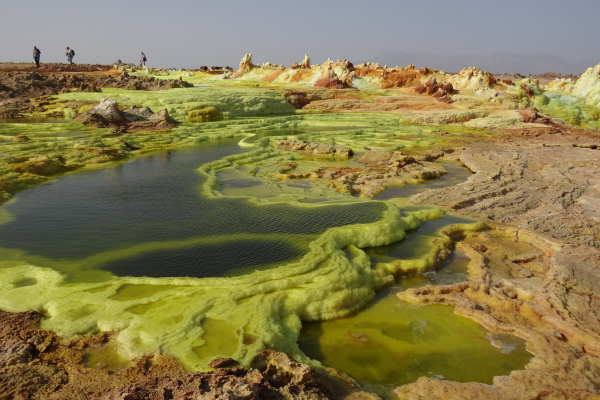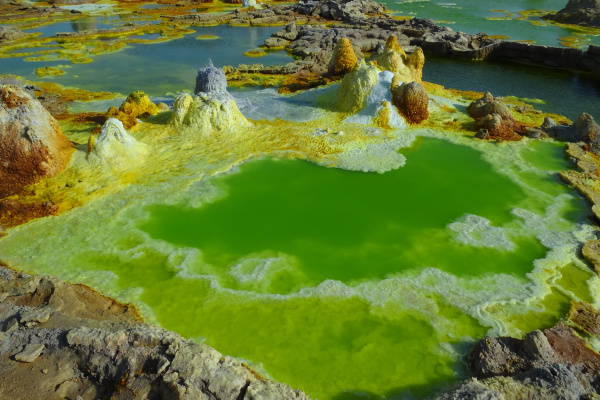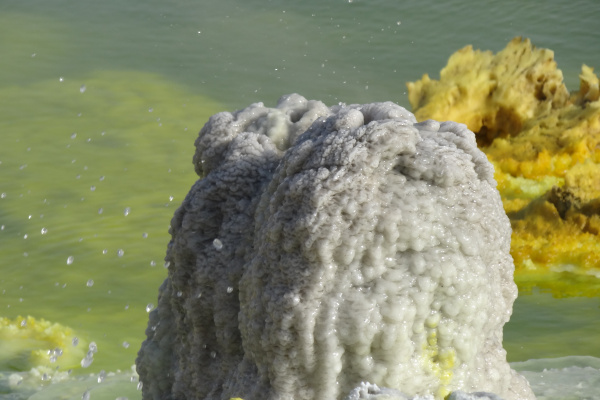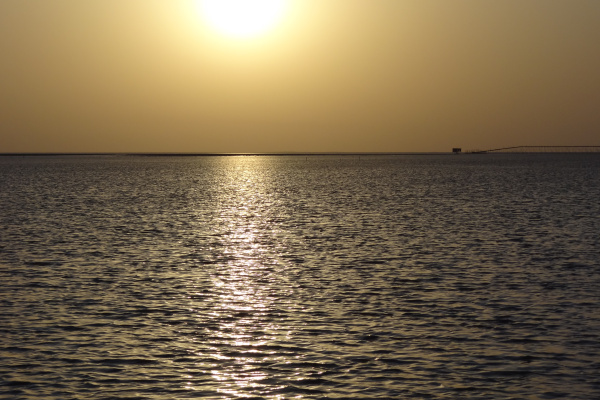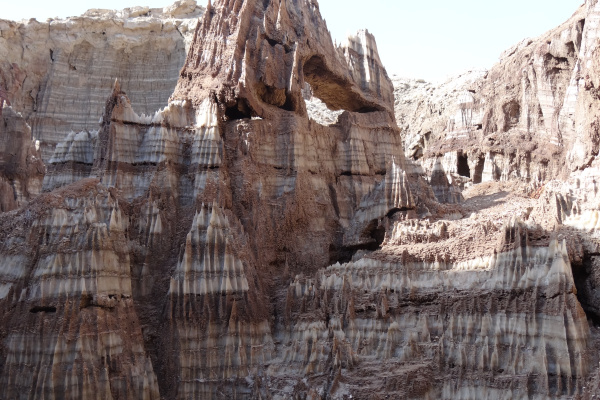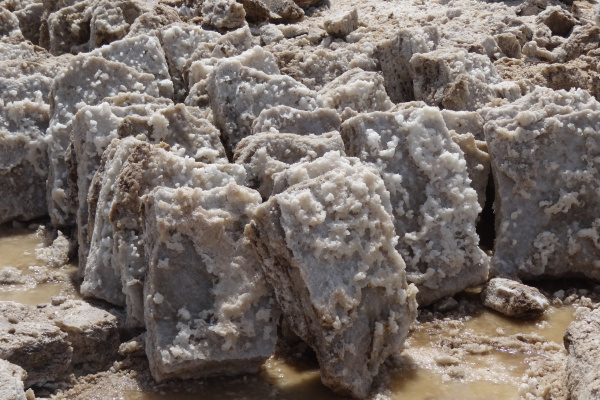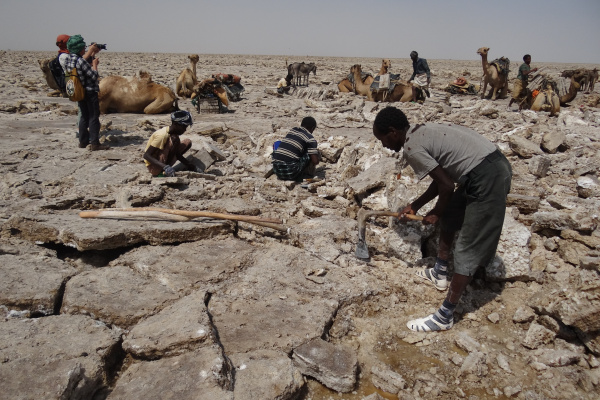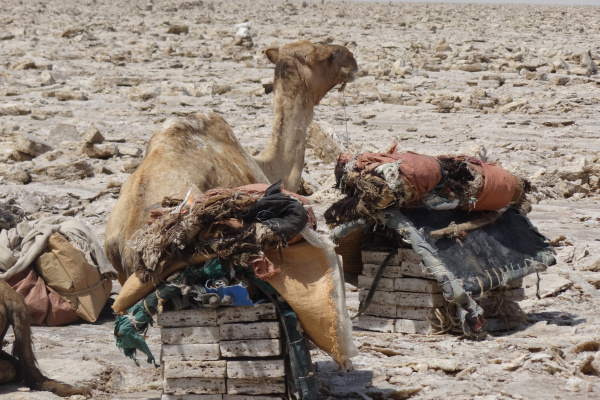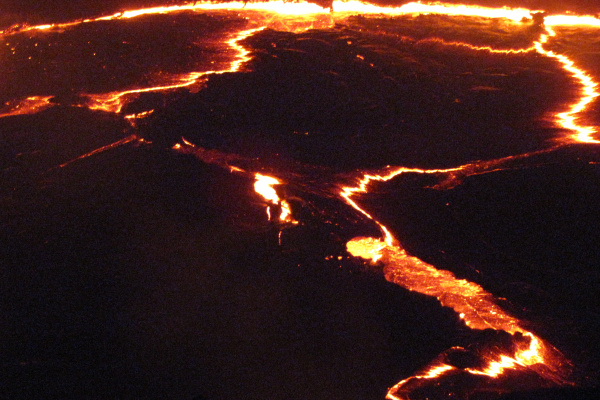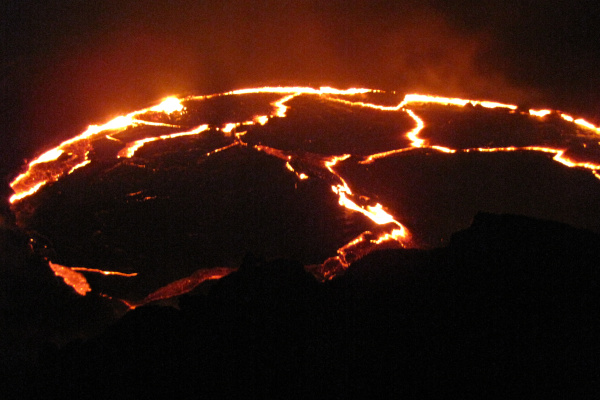The Danakil Desert
Presentation
Danakil Depression, the hottest place in the world!
The Afar depression is one of the most arid and sterile areas on the planet. The high temperatures make this region a desert, the Danakil Desert. With an approximate area of 4,000 km2 for its part below global ocean level, the Afar depression is mainly located in eastern Ethiopia.
The Danakil Desert in Ethiopia is a landscape of raw and haunting beauty. Its main features include unique geological formations, salt plains, active volcanoes, burning lava lakes, thermal springs and dazzling colors. This desert, one of the hottest places on Earth, is also home to a diversity of life adapted to extreme conditions.
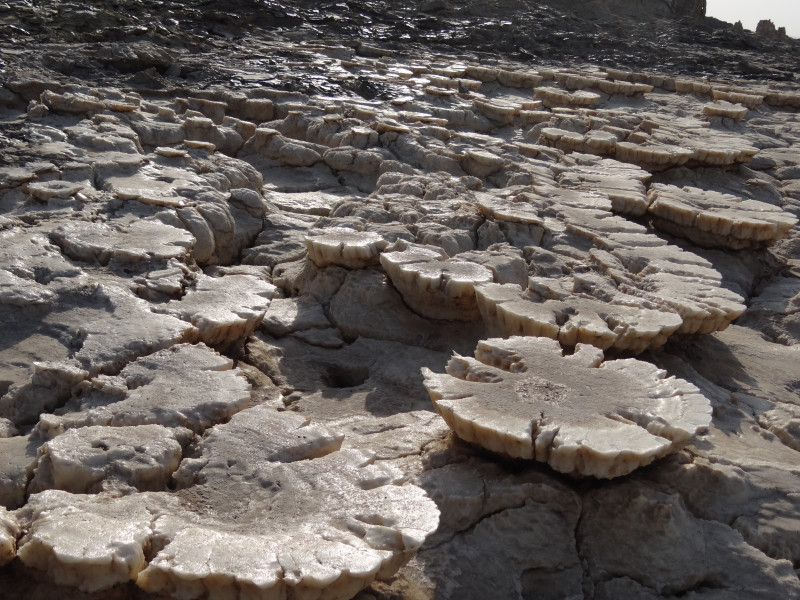
Dallol
Dallol is known for its colorful landscapes, salt formations, hot springs and fumaroles. With immense concretions of sulfur, iron oxide, potash and acid, creating a mineral landscape of surreal beauty.
These unique geological formations provide an impressive visual spectacle, with colors ranging from yellow, orange, ocher and white, contrasting with the acid green lakes.
Despite the extreme conditions, studies have revealed the presence of diverse microbial life in the hypersaline systems near Dallol, notably in the salt canyon caves and salt plains at the base of the dome. These findings highlight the ability of life to adapt even in extreme and chaotic environments.
In addition to its geological and scientific importance, Dallol is also associated with the exploitation of salt by local communities, who extracted this precious mineral from the strata formed after the evaporation of ancestral floods from the Red Sea.
Salt, white gold of Danakil
The Afars, a nomadic people living in the Danakil Desert region of Ethiopia, have an ancestral tradition of salt extraction. This community, known for its resilience in extreme environmental conditions, exploits the vast salt plains of the region by extracting salt in an artisanal manner.
Salt extraction by the Afars often involves arduous labor under the scorching sun. Workers use traditional techniques to extract salt from the salt plains, then often transport it long distances on camels to sell in local markets.
This practice, passed down from generation to generation, is a testimony to the close relationship between the Afars and their desert environment. Salt mining is an essential part of this community's cultural and economic identity, as well as being a reminder of the harshness of life in the Danakil Desert.
Erta Ale Volcano
This volcano, which rises to 613 meters, has one or sometimes two active lava lakes at its summit, which sometimes overflow onto the southern flank of the volcano.
Erta Ale is Ethiopia's most active volcano and is regularly visited despite the region's inhospitable conditions.
This geological site offers an immersion in the heart of the Earth, with fountains, bubbles and waves of lava rising several tens of meters in height.
Despite the heat in the region and the isolation of the volcano, Erta Ale has become one of the major tourist destinations in the region. Its ascent represents a challenge for adventurers seeking new horizons, while providing the opportunity to closely observe an active volcano and one of only three volcanoes in the world to have a permanent lava lake.
Erta Ale is a geological site of great importance and an impressive natural spectacle, offering a unique experience for those who dare to explore its unique territories.


